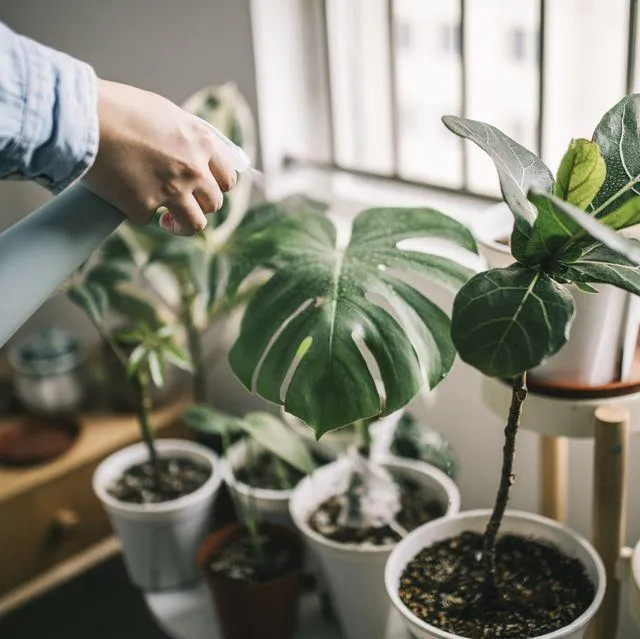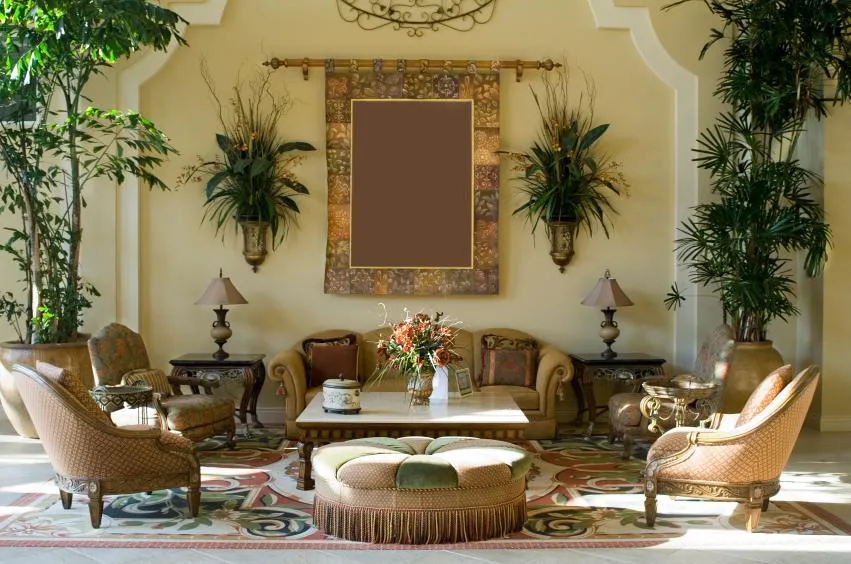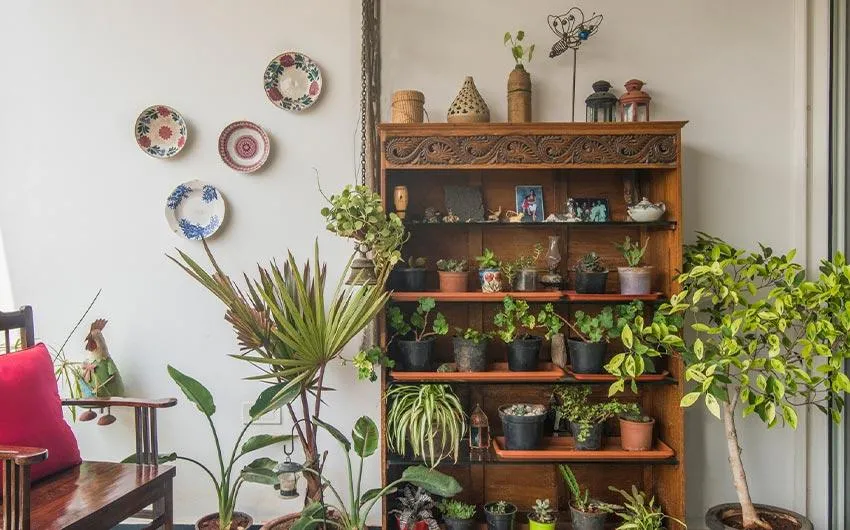Plant Décor Ideas to Spruce Up Your Home
Whether you’re looking to add some greenery to spice up your living space or searching for unique gifts for the plant lover in your life, decorative plants are a great option. In this article, I’ll cover various plant décor ideas to consider as well as address common questions users may have when venturing into the world of indoor plantscaping.
Choosing the Right Plants
First things first – you’ll want to select plant varieties that are suitable for indoor conditions. From my experience as an avid plant parent, it’s important to research the light, water, and care requirements for different species to set your plants up for success. Some great low-maintenance options to start with include pothos, snake plants, peace lilies, and ZZ plants.
The good news is there are decorative plant options for nearly any lighting situation in your home. For bright, indirect sunlight, try birds of paradise, philodendrons, or Chinese evergreens. If you only get low light, consider spider plants, Chinese money plants, or colorful foliage like nerve plants or polka dot plants. And for zero-light bathrooms or basements, focus on self-sufficient succulents or air plants that don’t require soil.
Container Options
When it comes to housing your plant babies, the container choices are endless. Traditional terra cotta pots are always a safe bet, but you can get creative with rustic wood boxes, glass cylinders, wicker baskets, or even repurposed household items. I’ve seen folks use everything from vintage watering cans to old boots! Match the vessel’s style to your interior decor for a cohesive look.
For a chic bohemian vibe, try macramé hangers or wrought iron stands. Or go glam with marbleized ceramic pots. You can also cluster plants together in rustic wood planters or mound succulents in shallow terra cotta trays for a lush, layered appearance. The container is just as much a design element as the plant itself.
Arranging for Impact
Proper placement and grouping is key to making a big visual impact with your plant décor. Placing large accent plants in the corners of a room creates height and fullness. Consider artistic pairings like tall snake plants flanking a bookcase or robust monsteras beside a sectional sofa.
Spider plants, pothos, and philodendrons also trail beautifully when hung in modern macramé pots or mounted on walls. Try clustering terrariums or succulent planters on floating shelves too. And remember empty wall space? Artistic shadow boxes filled with air plants or succulents add natural texture.
- Place your plants purposefully, whether singularly as accents or in eye-catching clusters.
- Play with varying heights – use tall plants and trailing vines together for visual balance.
- Consider framing windows with lush foliage for an outdoor-indoors vibe.
With some trial and error, you’ll eventually develop an innate plantscaping sense for crafting inviting vignettes throughout your home.

Measuring Plant Success
Naturally, no plant décor guide would be complete without addressing the inevitable – how to keep your plants alive and thriving long-term! While plants can seem low-maintenance, they do require consistent care to remain healthy and full. Here are some keys I’ve learned:
– Water when the top inch of soil is dry. Overwatering is more common than underwatering for indoor plants.
– Check for pests before bringing plants indoors. Isolate new arrivals initially until you’re sure they’re pest-free.
– Fertilize during the growing season in spring and summer. Diluted liquid or slow-release granular plant food every few months does the trick.
– Repot plants that are rootbound in larger containers with well-draining soil. Signs include lack of growth and shriveled leaves.
– Move plants to adjust light needs as seasons change. Rotate their positions weekly to encourage even growth.
– Remove yellowed or broken foliage and branches. This pruning maintaines your plant’s attractive shape.
With a little TLC like the tips above, your plant décor investments should provide you with years of natural beauty indoors. The joy of having green companions far outweighs any challenges faced along the way.

Handling Common Curiosities
No doubt readers searching for plant décor ideas may have additional practical concerns. Allow me to address several frequent questions:
– Are indoor plants safe around pets and kids? Generally yes, but keep plants like lilies, sago palms, and dieffenbachia out of reach as some can be toxic if ingested.
– How do I prevent or treat pests? Learn the signs like webbing or damage and treat with neem oil, insecticidal soap, or Captain Jack’s Deadbug Brew as needed. Prevention is key through quarantining new plants.
– Will plants collect dust? To some degree, yes, but their evergreen foliage also helps filter indoor air pollutants. Simply wipe leaves periodically with a damp cloth.
– Which plants are cat- and dog- proof? Heartleaf philodendrons, pothos, snake plants, dracaenas and Chinese evergreens are virtually indestructible – even to persistent pets!
– How do I plantscape on a budget? IKEA, grocery stores, and big box stores offer affordable assortments. You can also propagate cuttings from friends’ plants for free duplicates. Repot seedlings together in colorful mismatched vessels too.
Hopefully those common concerns help instill more confidence in starting your own indoor plant collection. With the right homework, plant décor can be budget-friendly and low-stress.
Inspiration from Real Homes
To wrap up, allow me to share a couple real-life plantscaping success stories that may spark ideas for your space. My friend Sarah faced an extremely dark apartment with minimal available wall space – but she got super creative mounting air plants, succulents and fairy lanterns throughout in shadow boxes, terrariums and hanging glass globes for ambient light reflection. The result was a cozy bohemian oasis that felt much larger than it was.

Meanwhile, coworker Lisa transformed her expansive bay window nook into a lush tropical paradise using a collection of colorful foliage plants in various hanging planters, pots and a custom-built narrow greenhouse shelf. It makes the perfect spot to cozy up with a book among the greenery any time of year despite her northern climate. Tales like these prove that with ingenuity and the right approach, stunning plant décor is totally achievable whatever your space limitations may be. Get inspired and get planting!
I hope this overview of popular plant décor options, important considerations and real examples provided a helpful starting point for anyone interested in incorporating more natural style into their surroundings. Please feel free to reach out if you need any other indoor plantscaping advice. Happy decorating!
Plant Decoration Factors to Consider
| Plant | Care Level | Bloom Time | Size | Light Needs |
|---|---|---|---|---|
| Pothos | Low | None | Small to Medium | Low to Medium |
| Succulents | Low | Seasonal | Small | High |
| Spider plant | Low | Spring to Fall | Small to Medium | Low to Medium |
| Snake plant | Very low | Spring | Medium to Large | Low |
| Peace lily | Low | Spring to Summer | Medium | Medium to High |
| Chinese evergreen | Low | Spring to Fall | Small to Medium | Medium to Low |
FAQ
-
What are some popular types of plant decorations?
Basically, there are a few main kinds of plant decor used to decorate homes and offices. Some big ones are potted houseplants, hanging plants, and succulents. Flowers are also commonly used indoors.
-
How often do I need to water potted plants?
It kind of depends on the plant, but as a general rule you’ll want to water potted plants anywhere from once a week to every couple weeks. Check the soil – if the top inch is dry, it’s time to water. Don’t overdo it though, or the roots could rot.
-
What’s the best way to display succulents?
Succulents look cool in all sorts of places! You can put them in hanging pots near a window, arrange them artistically on a shelf, or lay them out on a table. Maybe try clustering different types together – some sources say the varying shapes and colors make for a stunning display. You be the judge!
-
How can I keep plants looking nice?
To keep plants looking their best, you’ll want to remove any dead or dying leaves or stems. Trimming off dead bits helps the plant put its energy into new growth. You may also want to rotate pots occasionally so all sides get sun. Dusting the leaves now and then cuts down on lint and grime buildup too. A little TLC goes a long way!
-
What should I do with plants that aren’t thriving?
If a plant seems sad no matter what you do, there are a few options. First, check conditions like light, water, and soil to see if anything needs adjusting. You can also try repotting into fresh soil. Nevertheless, sometimes a plant just isn’t compatible with your space. Don’t feel bad dumping one that’s a lost cause – there are always more out there to choose from!
-
Is it hard to care for houseplants?
Caring for houseplants is pretty manageable for most people. The trick is knowing your plant’s needs – what light it likes, how often to water, etc. With a bit of research, you can figure out what types are lower maintenance. Some plants even thrive on neglect! Maybe houseplants will become your new hobby. At the same time, don’t be too hard on yourself if you kill a few – remembering to water plants can be amazingly difficult apparently.

Do you have any other plant decoration questions? Houseplants are amazing at making a space feel welcoming and alive. I find it stunning how something as small as a potted plant can brighten up a room. Experts say surrounding yourself with greenery is good for your well-being too. It’s like having little bits of nature indoors. Please let me know if this FAQ helped or if you need any other planty advice!
